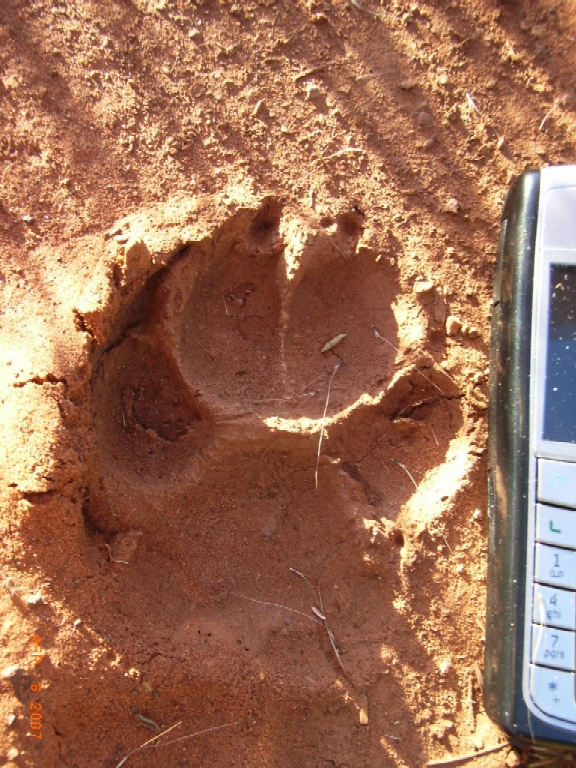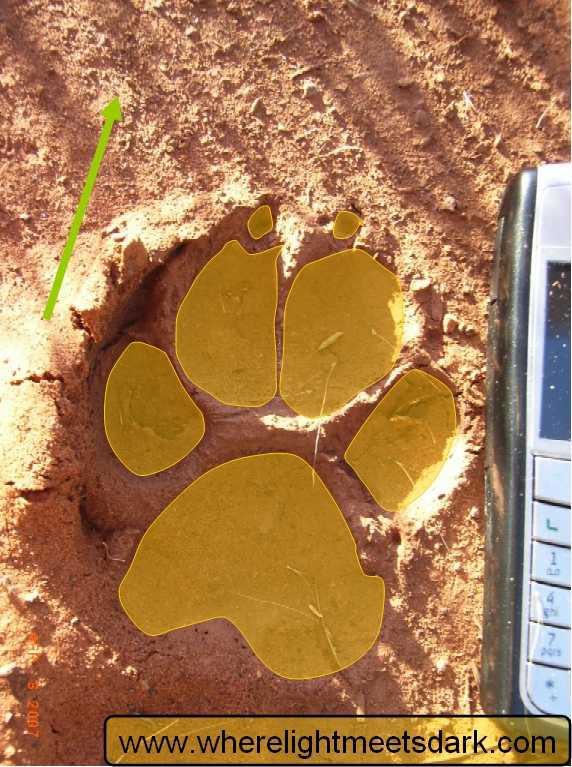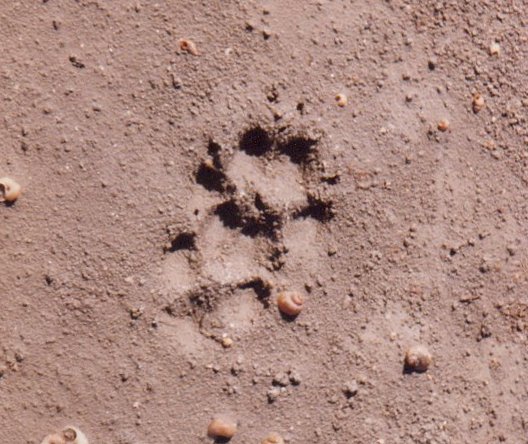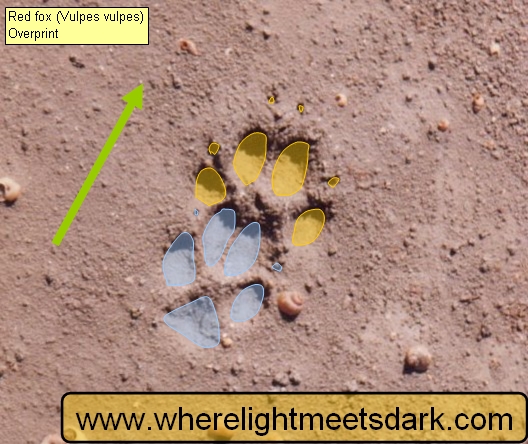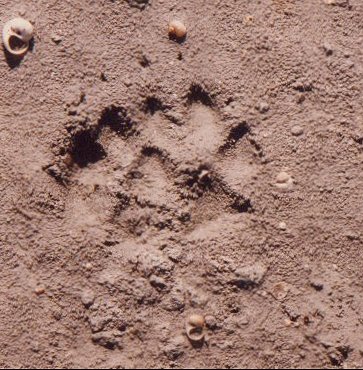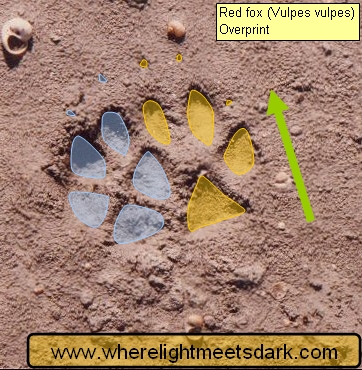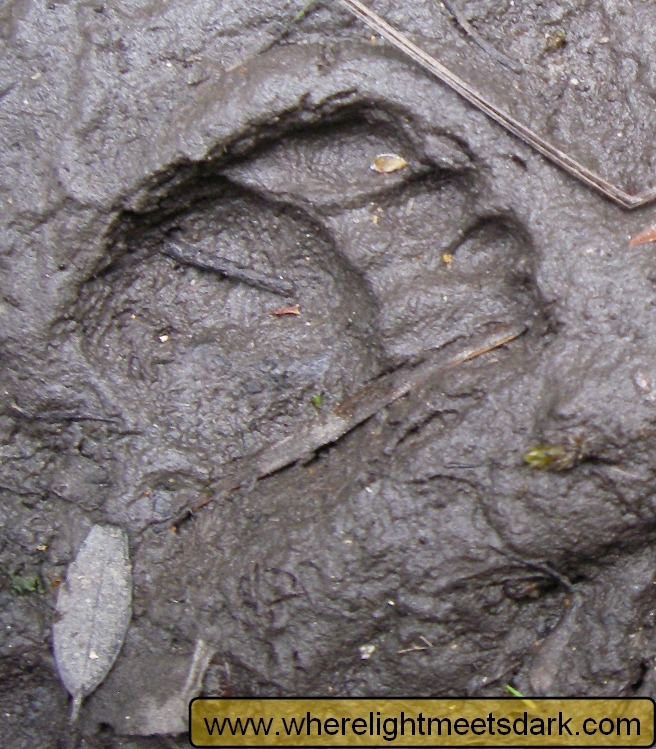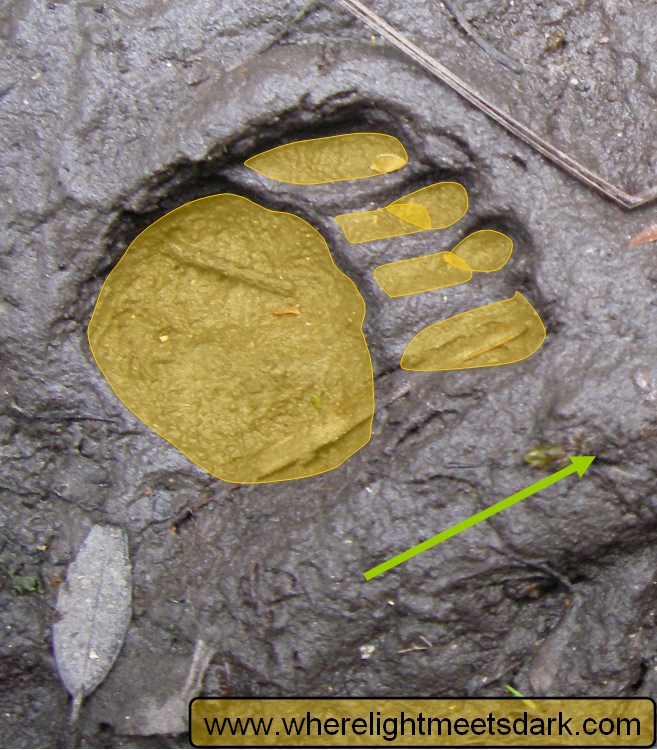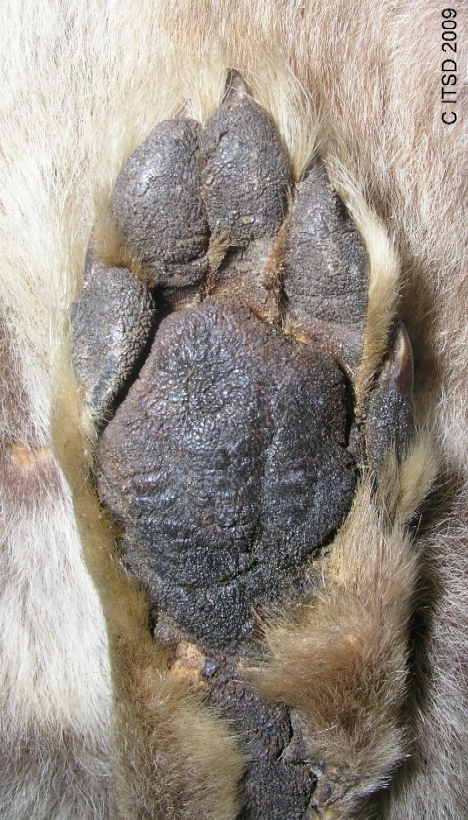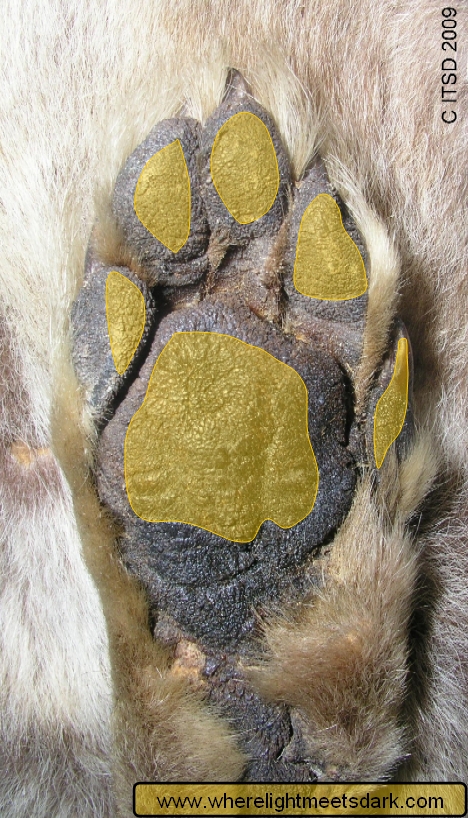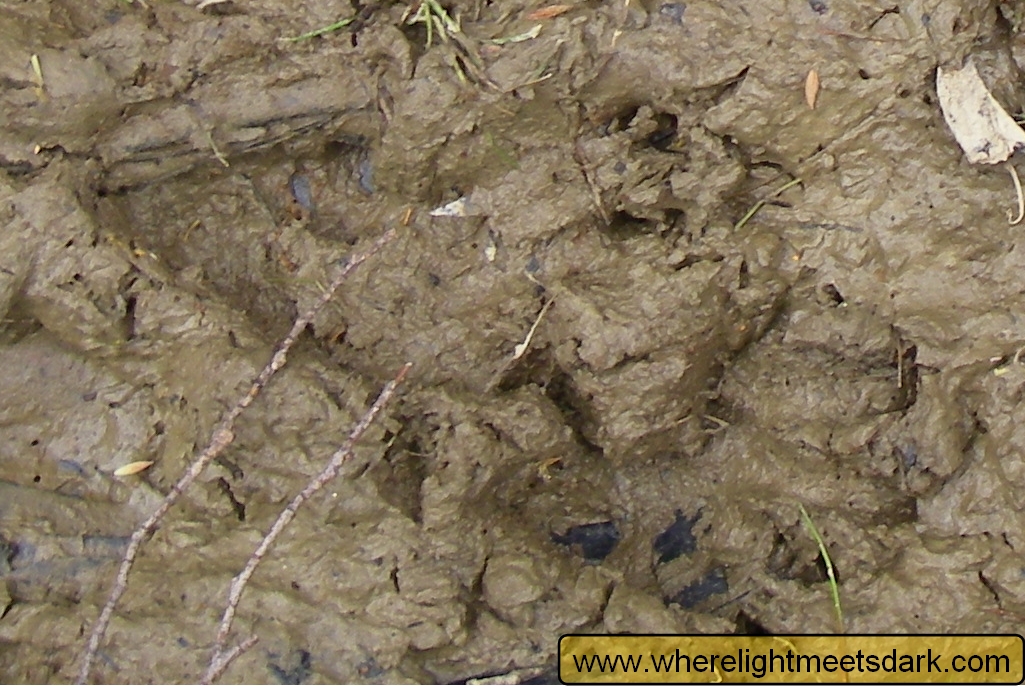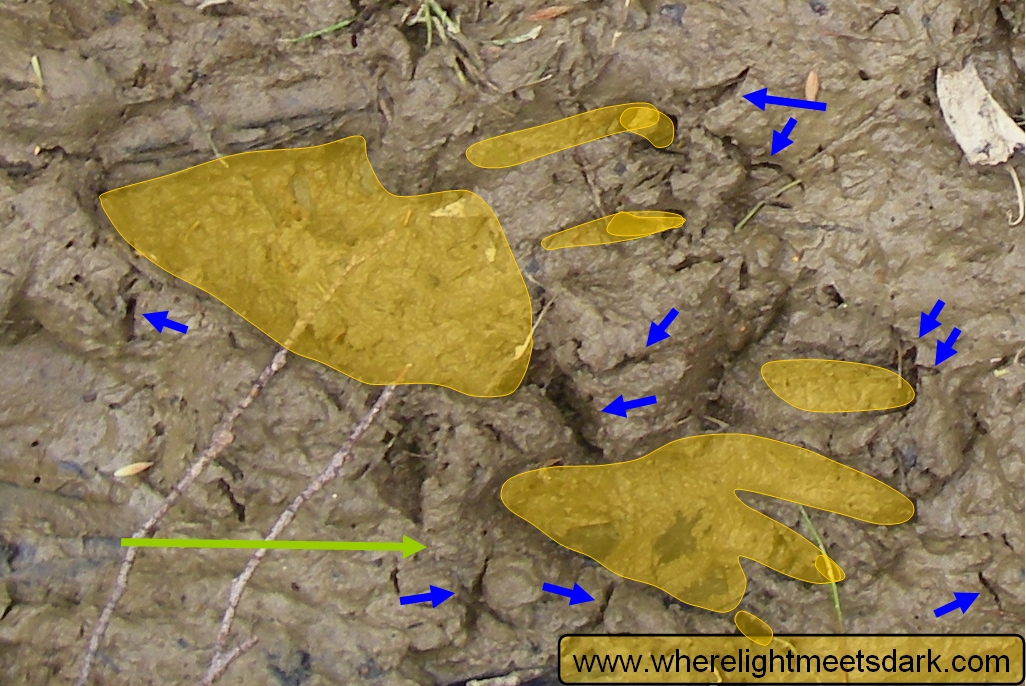Animal tracks library
Submit a photo Suggest a correction
The animal tracks library is a catalogue of photographs of Australian animal tracks, gaits, signs, scats and footprints.
Slow loading page - but you get lots of high resolution photos
Mammals
Canidae (dogs and relatives)
Dingo (Canis lupus dingo, assumed) (single print in sand)
Source: personal communication, 2007.
We both assumed this was a dingo, albeit a large one. Although it looks as if there is a fifth digit on the left side of the image, this is more likely due to a stone or other artefact in the substrate.
Being a subspecies of domestic dog, the dingo's dew claw is placed high on the foot and shouldn't really leave an impression in the footprint.
Unlike domestic dogs, the dew claw is absent on the dingo's hind feet.
Red fox (Vulpes vulpes, assumed) (overprints in sand)
Source: http://thylacoleo.proboards.com/index.cgi?board=general&action=display&thread=1520
This is a good example of an "overprint". This is where the hind footprint is placed over the forefoot print. If you look carefully you can just see the claw marks ahead of the digits.
Source: http://thylacoleo.proboards.com/index.cgi?board=general&action=display&thread=1520
Here the overprint can be seen again, together with claw marks.
Dasyuridae (Tasmanian devil; quolls)
Tasmanian devil (Sarcophilus harrisii, assumed) (hind print in mud)
Source: WLMD
Devil hind foot prints are very squarish in shape. This is a very typical example. Note the plantar pad is square, but so too the toes (considered all together) form a rectangular unit, and the whole print is also squarish. Finally, the toes are not splayed, but all of them together match the width of the plantar pad.
Thylacinidae (Tasmanian tiger)
Thylacine (Thylacinus cynocephalus, actual) (foot taxidermy)
Source: International Thylacine Specimen Database [Third Revision] 2009
The images at left show the front foot (manus, or hand) of the Tasmanian tiger (thylacine).
It should be noted that this is a taxidermy specimen and therefore the layout of the digits is most likely different might be expected in the case of a live animal. For example, the digits may be more splayed, and the left-most digit in the image may not be as compressed as it appears here.
For the above reasons the overlay tracing (right image) should be taken as a very general guide only.
Unfortunately no indisputable plaster casts of thylacine tracks exist. The nearest available references are casts taken in Tasmania's south west in the late 1930s and early 1940s and casts prepared using taxidermies such as the one shown here.
Vombatidae
Common wombat (Vombatus ursinus tasmaniensis, assumed) (overprints in mud)
Source: WLMD
A key diagnostic feature of the common wombat track is the very pointed, drawn out anterior portion of the hind foot track. This is seen at the left of this image.
The forward portion of that track is not well formed here, but note that for the 2 visible digits, the deep claw impressions are visible. These are indicated by the darker shading in both tracks.
Wombat tracks very commonly overlap each other, as shown here. The blue arrows indicate cracking in the mud around the print. Although the cracking is caused by the weight of the animal on the substrate, it is not caused by direct contact with the animal. In some cases this mud cracking could be mistaken to represent a claw impression. In this photo, the top-most digit is the most likely candidate for this misinterpretation.
These 2 prints occured in a sequence of at least 6, all visible within a patch of ground approximately 18 inches square.
Notes
The overlays are approximate and based solely on the photographs, not on "expected" print patterns.
